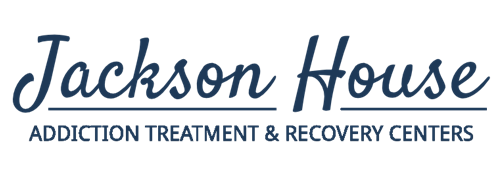Admission Line (866) 396-3655
6 Ways to Manage Pain Without Opioids

The opioid crisis has long been a problem for healthcare systems around the world, resulting in devastating consequences for individuals and their families. Opioids have claimed countless lives, shattered communities, and strained healthcare resources. It’s a reminder of the dangers of unchecked prescription practices and the need for comprehensive solutions to manage pain without relying on opioids.
Fortunately, there’s a growing awareness of the need for alternative pain management methods. By addressing the root causes of the opioid crisis and promoting different pain management strategies, the tides can shift, and many people can be spared from the tight grip of opioid addiction.
Modify Your Habits
Modifying your daily habits is one of the best ways to manage pain without the need for opioids. Maintaining a healthy lifestyle is crucial for managing chronic pain as it promotes your overall well-being.
Several lifestyle factors can impact the pain that you experience. These include:
- Exercising regularly
- Getting quality sleep at night
- Maintaining a healthy diet
While these lifestyle factors seem basic and somewhat insignificant, they’re the foundational building blocks of your health. Maintaining a healthy diet reduces inflammation and provides all the nutrients your body needs. Exercising regularly helps to strengthen your muscles, thus improving flexibility and releasing natural pain relievers known as endorphins. Lastly, getting quality sleep aids in tissue repair and reducing stress.
Incorporating healthy habits can be a powerful way to alleviate chronic pain. Some examples of how you can incorporate healthy habits into your daily routines may include:
- Considering meal planning to maintain a healthy diet. This helps you avoid the possibility of overeating or eating unhealthy fast food when you’re hungry.
- Establishing a consistent sleep schedule. If you have trouble getting to sleep, you can try methods such as establishing a bedtime routine and changing your consumption of caffeine, alcohol, and food to be well before your bedtime.
- Adopting mindfulness practices. Exercises like deep breathing, yoga, and meditation can be part of a holistic approach to pain management.
Move Your Body
Incorporating stretches and exercise into your daily routine can be beneficial when it comes to alleviating pain. Some examples of common stretches include:
- Calf stretches
- Hamstring stretches
- Neck stretches
- Shoulder stretches
In addition to these common stretches, physical therapy can be integrated into your lifestyle as another form of pain management. Physical therapists can assess pain and tailor treatment plans to your needs. This process can also improve your overall strength and flexibility, reducing pain and preventing future injuries.
Exercise can also target specific types of pain. For example, targeted stretches around the neck and shoulder area can alleviate neck pain. Similarly, people who experience pain across their bodies, such as fibromyalgia, may find relief in low-impact exercises such as walking and stretching.
Be it through simple stretches to release tension or strength training to release endorphins, exercise is an essential component of non-opioid treatment for chronic pain conditions.
Utilize Relaxation Techniques
Mindfulness, meditation, and relaxation exercises can help you effectively deal with pain.
Mindfulness can help you become more aware of your body's sensations and reduce the emotional response to pain. Through focused breathing and imagination, meditation can help shift your attention away from pain, creating a state of deep relaxation. Additionally, relaxation exercises such as progressive muscle relaxation and guided imagery can help relax tense muscles, lower blood pressure, and release endorphins.
Pursue Alternative Therapies
Alternative therapies, such as acupuncture, massage therapy, cold/heat therapy, and chiropractic care, can also assist in managing chronic pain. These can diversify your pain management options, as they each provide noninvasive, drug-free options that target both the physical and emotional aspects of pain.These therapies are all part of a holistic approach to pain management. They can address underlying causes and promote better well-being. However, while these alternative therapies can be effective for some, they may be less effective or less convenient for others. It’s best to combine alternative therapies with conventional treatments to create a comprehensive care plan for chronic pain.
Use Non-Opioid Medications
Non-opioid medications like the ones below can significantly reduce pain without the threat of addiction.
- Over-the-counter pain relievers such as acetaminophen and nonsteroidal anti-inflammatory drugs (NSAIDs) offer effective relief for mild to moderate pain.
- Prescription medications, such as antidepressants, nerve pain medications, and steroid injections, can offer relief for neuropathic pain.
- Topical medications like lidocaine patches and creams can provide targeted relief for specific areas.
Seek Support
Detoxing from opioids alone can be an overwhelming journey with many physical and psychological challenges. Combating withdrawal symptoms such as nausea and muscle pain, dealing with intense cravings, and coping with the fear of relapsing can be incredibly stressful.
Seeking support from your loved ones and medical professionals can aid detox and recovery. These parties provide emotional support, encouragement, and access to various treatment options. Our treatment programs at Jackson House Recovery Center strongly emphasize community. Our clients participate in daily group therapy and recovery meetings to foster a stronger sense of camaraderie and accountability.
Contact Jackson House Recovery Centers
By combining these non-opioid approaches to managing chronic pain, you can improve your quality of life, reduce the possibility of relapsing, and live without pain. To learn more about how to recover from opioid addiction, contact Jackson House Recovery Centers today.
